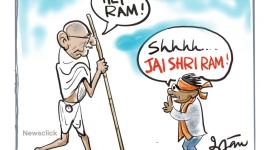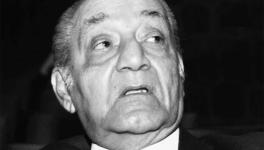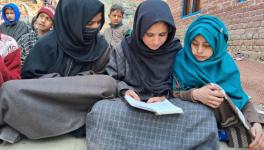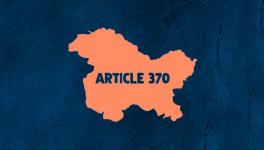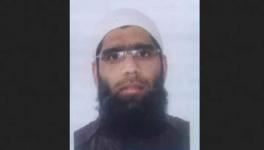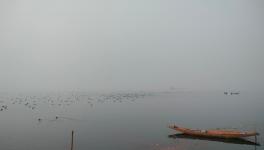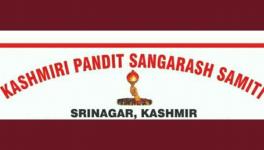Is it Time for the Real Kashmir File?
Representational Image
A few days before his assassination on 21 May 1990, Mirwaiz Moluvi Mohammad Farooq, one of the most significant clerics in Srinagar, gave a respected scholar-activist a call. Farooq wanted the scholar to use his good offices to prevail on the authorities to arrest him as he feared for his life. Farooq’s fears were based on the environment of fear psychosis prevailing in the Kashmir valley as militants had carried out numerous targeted assassinations. There was an administrative and security collapse.
Historically, the Mirwaiz in Kashmir acquired a political role in the second quarter of the 20th century. It was not a surprise that Mirwaiz Farooq was one of the targets of the militants. He was critical of some of the acts of militants, including the kidnapping of Rubiya Sayeed, daughter of the then Indian Home Minister Mufti Mohammad Sayeed, on 8 December 1989 and reportedly called the act un-Islamic. The scholar-activist whom Farooq had approached was widely respected by all political parties for his knowledge of Jammu and Kashmir. He reached out to many in the power structure, including the Jammu and Kashmir governor, and alerted them that Mirwaiz Farooq was facing danger.
The scholar-activist was told Farooq should ask for security, which he would be granted immediately. He reminded the authorities of the compulsions of a Mirwaiz’s standing. Seeking protection would compromise Farooq’s political position amongst ordinary Kashmiris. Therefore, arresting him was the best way out as it would keep his political capital intact in the valley and protect his life.
Within a few days, a group of armed men knocked at Mirwaiz Manzil, the abode of Farooq near the picturesque Nagin lake. They came on the ruse of meeting him. One of his employees took him to the meeting room, and as Farooq walked in, a shower of bullets greeted him, killing him on the spot. Later on, police investigations revealed that Hizbul Mujahideen militants carried out the attack. The Hizbul Mujahideen had come into existence just a month earlier, in 1990.
It is commonly believed that days before his death, Mirwaiz Farooq had numerous telephonic conversations with the late George Fernandes, who held the Kashmir affairs portfolio in the National Front coalition government. The militants had intercepted this conversation. In the eyes of the militants, that sealed the fate of Farooq. His killing took place within the volatile context of 1988-90. As the scholar-activist late Balraj Puri writes in his bestseller first-hand account, Kashmir: Towards Insurgency, the volatile context had domestic, international and security overtones.
The story of Mirwaiz’s family is a tale of personal tragedy, political survival and pragmaticism in an environment littered with countervailing forces. Farooq had inherited the Mirwaiz’s mantle in the 1960s, after the death of his uncle Mirwaiz Yusuf Shah, who had migrated to Muzaffarabad in Pakistan-administered Kashmir. His uncle’s rivalry with Sheikh Abdullah was notoriously known as the “Sher-Bakra” rivalry. Abdullah had emerged as a political hero in the valley in 1931 once he assumed the leadership of the people along with Mirwaiz Yusuf Shah, maulvi of the Jama Masjid.
The Muslim Conference was formed on 16 October 1932 with Sheikh Abdullah as president and Chowdhary Ghulam Abbas as general secretary. Abdullah’s political mobilisation used the Hazratbal mosque, which symbolised Kashmiri Islam, as a platform. Whereas Mirwaiz Yusuf Shah, Farooq’s uncle, had his base at the Jama Masjid. As a consequence of the growing politicisation of the valley’s population, Farooq and Abdullah developed ideological differences.
As an institution, the Mirwaiz commanded influence in some pockets of Srinagar because of religious reasons, whereas Abdullah symbolised the new era in favour of political reforms in Kashmir. Abdullah’s supporters were known as the Shers or lions, while those who supported the Mirwaiz were called the Bakras or goats.
In the 1950s and 1960s, when Abdullah was alienated from New Delhi, a quiet engagement began between Mirwaiz Yusuf Shah and New Delhi. Both sides agreed to respect one another and their respective red lines. They decided that Shah would never impede the conciliation between New Delhi and Srinagar. And, further, that New Delhi would remain conscious that leaders like Shah are only significant until they have political potency.
After the assassination of Mirwaiz Moluvi Mohammad Farooq, his young son Umar Farooq took over the mantle of Mirwaiz. He was one of the founders of the All Party Hurriyat Conference, a grouping of separatist parties that came into being on 9 March 1993. Like his father, a consistent feature of Umar’s politics is adapting to the local political temperature. In 2002, when prime minister Atal Bihari Vajpayee’s idea of conciliation caught the popular imagination in Kashmir, Mirwaiz Umar, along with the late Abdul Ghani Lone, took up cudgels against former Jamiat-e-Islami leader Syed Ali Shah Geelani. At that point, the late Geelani opposed conciliation with New Delhi and India-Pakistan conciliation. The public feud between Mirwaiz Umer and Geelani was accompanied by the assassination, on 21 May 2002, of Abdul Ghani Lone by militants at a memorial function in honour of the late Mirwaiz Farooq.
The story of Kashmir’s Mirwaiz demonstrates that understanding the granularities of the context of Kashmir is the way to understand the turbulence in Kashmir over the last thirty years and honestly introspect. The canvas of understanding the three-decade tragedy in Jammu and Kashmir, particularly for the generation born after the 1990s, should be ethnically, religiously and geographically inclusive. It should also include the sufferings of non-Kashmiri speaking people, especially those living south of the Pir Panjal range. This area experienced nearly 40% of the civilian killings in the first two decades of the conflict, including massacres and mass displacement in the remote hills with tardy relief and rehabilitation. These people inhabit the most inaccessible parts of Jammu and Kashmir, are not as well-connected, well-educated, articulate, and, consequently, have not been able to access public spaces where they can be seen, much less heard.
The writer is the author of two books on Jammu and Kashmir, including Across the LoC, Columbia University Press. The views are personal.
Get the latest reports & analysis with people's perspective on Protests, movements & deep analytical videos, discussions of the current affairs in your Telegram app. Subscribe to NewsClick's Telegram channel & get Real-Time updates on stories, as they get published on our website.









